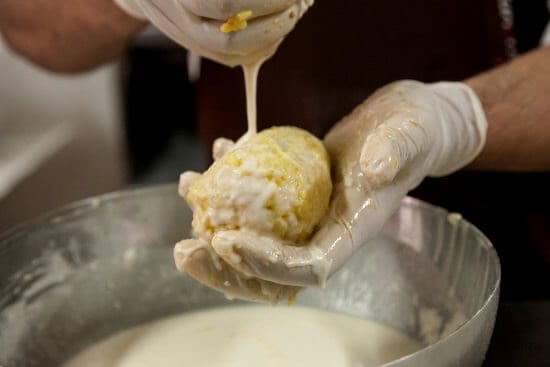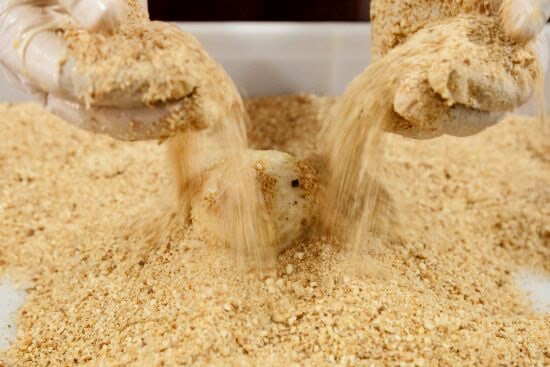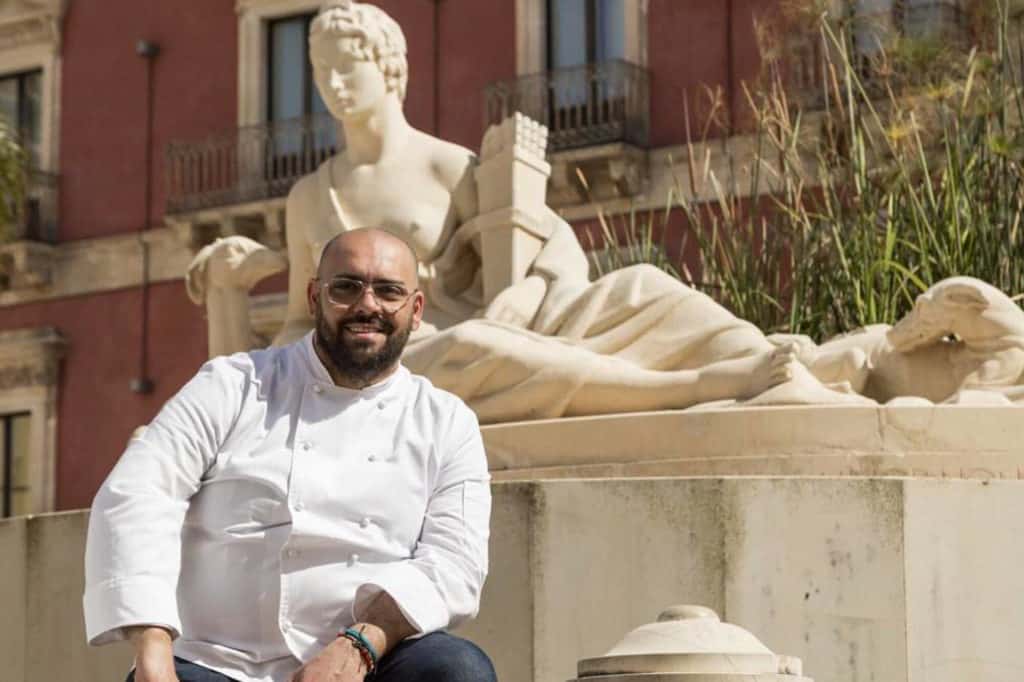Palermo’s best street food
It’s late night in Palermo and you’re hungry. Solution: un’arancina. You’re exhausted, waiting for your flight at Catania-Fontanarossa and your stomach starts growling. Solution: un arancino. Regardless of how perfect the arancina/arancino is at satisfying any kind of hunger, for decades maybe even centuries, siculi have debated the correct nomenclature of the most divine street food ever created – the arancina, on the streets of Palermo, and the arancino, when hanging out in Catania.
An incredible handful of rice, the arancina/o is the edible symbol of Sicily and its rich culture. Named after an orange for its often rotund shape and marigold colour, the rice ball is manna from heaven- about 8-10 cm in diameter (slightly larger than a baseball), stuffed with ragù or other deliciousness, bread battered and fried.
Arancina in stories
Legend and lore tell the story of lavish banquets during Saracen reign in which trays full of saffron-flavoured rice, vegetables, meat and other aromas were placed on tables, and guests scoop up rice and more with their hands, crumpling it in their fists. Eventually, the Siculi would ball it up, bread and deep fry to a crisp golden resembling an arancio… an orange, the delicious fruit brought to the island by the Moors. Eventually, the arancino became the ideal portable treat, its ingenuity attributed to King Frederick II, who stuffed his saddle bags arancine while on hunting trips.


Shape Matters
Though unbeatable as a sphere in Palermo, the delicious arancina takes on a whole other form in Sicily’s east. In bars from Furci to Siracusa, the traditional shape is conical like a little volcano and entirely reminiscent of Etna. And the cone is slightly phallic, thus a bit masculine so don’t be mistaken, it’s an arancino,
“Che poi maschio o femmina, a punta o rotonda, è sempre la fine del mondo!”
“Whether male or female, conical or round, it is always the best!” says Accademia della Crusca, Italy’s society of lingual scholars (and the oldest linguistic academy in the world) who set the final word on, well, words.
There is no one who knows the arancina better than Sandro Pace, chef and owner of Cantunera, two of the most delicious arancine-dedicated bars in Sicily’s southeast in Ragusa and Comiso.
Alessandro “Sandro” Pace is a self-taught chef and king of arancine whose fought off the stigma of learning disabilities and the let down of never-encouraging teachers to create Cantunera in Comiso (2012) and Ragusa (2017). From his first work experience at 9 years, selling toys at fairs with his uncle Giovanni, he found passion, inspiration and self-confidence. By 11, he was working long hours at Comiso’s historic Bar Corallo as a garzone (bus boy). By 14, he discovered his love for behind behind the counter at Bar Pasticceria Le Goloserie and met his true love Valeria at age 16. Ever since he started making cannoli and then arancine, Sandro has been sharing his love one bite at a time.

What’s the true story on the arancina?
It’s a food, invented who knows when, fruit of the cultural and culinary contaminations of Sicily, used“to bring meat” to [workers in] the fields. I think it was the Arabs who created it, for the simple fact of having introduced rice to Sicily. The crunchy crust, however, in my opinion, was added to please the children. Frying is a convivial gesture, central to large family gatherings.”
According to some arancina/o is rigidly traditional. But yours aren’t quite the shape we’re used it.
Arancina is a Sicilian brand, it must be respected, but it is time to know how to play with tradition and as Gualtiero Marchesi said “to update it”. I started with the arancina uncovered, where the inside is outside and I will continue on this road with a tribute to my friend Eliseo Occhipinti, a famed Ragusa-based butcher. The “elisburger al pascolo” (grazing elisburger) will soon be born.
Why is the arancina such a perfect treat?
Because there is nothing too much. A perfect balance between flavors, quantities, consistency. Philosophically speaking, we could say that container and content correspond. There is no dualism.


Arancino o arancina?
-Ino or -ina, we respect all ways of saying [it]. You know that bissare in Catania means “to repeat” while in Ragusa, the opposite: break. And then, if the male and the female exist, it is because the recipe perpetuates itself!
Round or Conical?
Round and conical.
Is there one way to eat an arancina?
In bites.
Your menu has 8 round arancine and 6 conical arancine. Why?
In Comiso and in Ibla, arancine have different shapes simply because those who handle them in the kitchen recognize their content on the fly and are not mistaken. Even though there must be some other secret reason…. The most popular is the swordfish and eggplant arancina, and by contrast the apple, speck and Asiago. Most sold? Of course, the ragù, because it is not just any meat sauce….

As told to by Erica Firpo.
